Virtual Reality
Explore Real Estate in Virtual Reality: A Guide to VR Real Estate
Published
2 years agoon
By
VRLOL
Virtual reality real estate
These days, virtual reality (VR) is the talk of the town. But did you know that you can also use VR to explore real estate? That’s right, with the help of VR, you can now take a 3D tour of potential investment properties and view them from the comfort of your own home.
For some, VR real estate exploration may seem like a dream come true. But for others, the concept can be intimidating. After all, the real estate market is highly complex and traditional viewings are often difficult to arrange. Not to worry, though, as this guide has all the details you need to get started with virtual reality real estate.
We will cover everything from setting up the necessary hardware to finding the best VR-ready properties and services. We’ll also provide tips for making the most of your virtual reality real estate experience. So sit back, relax, and get ready to explore some of the world’s finest real estate in virtual reality.
Quick Summary of Key Points
Virtual reality real estate offers many benefits, including providing a more immersive and realistic view of the property for potential buyers. Additionally, it saves time and money for both buyers and sellers by allowing people to view listings remotely.
What Is Virtual Reality Real Estate?
Virtual Reality (VR) Real Estate takes the traditional approach to real estate and adds a cutting-edge technology spin. This technology involves putting on a headset that projects a 3D digital world within which users can explore potential properties by being immersed in an environment that feels lifelike. With the use of VR, agents and brokers have the chance to provide prospective buyers with an incredibly interactive home tour or showcase multiple properties simultaneously for a seller.
The actual impact of using VR for real estate is currently being debated. While some experts advocate its use as part of giving clients a more realistic impression when exploring homes, others are concerned that relying on this form of home tours could reduce valuable aspects including smell and touch. Advocates suggest that it opens up opportunities such as showcasing international properties without having to leave the country, with pros saying agents can show clients maximum listings in minimal time while keeping them safe from the Covid-19 pandemic. Some people may argue that there are many benefits to physical viewings due to getting an accurate sense of scale for example, while opponents might worry that immersive tech carries privacy risks.
This technology certainly has the potential create easier transactions between agents and brokers, but the efficacy of how it translates into sales is still uncertain. To understand this kind of impact fully, we must look deeper at how virtual reality can benefit brokers and agents –and how it may actually be able to make things easier both practically and financially for everyone involved.
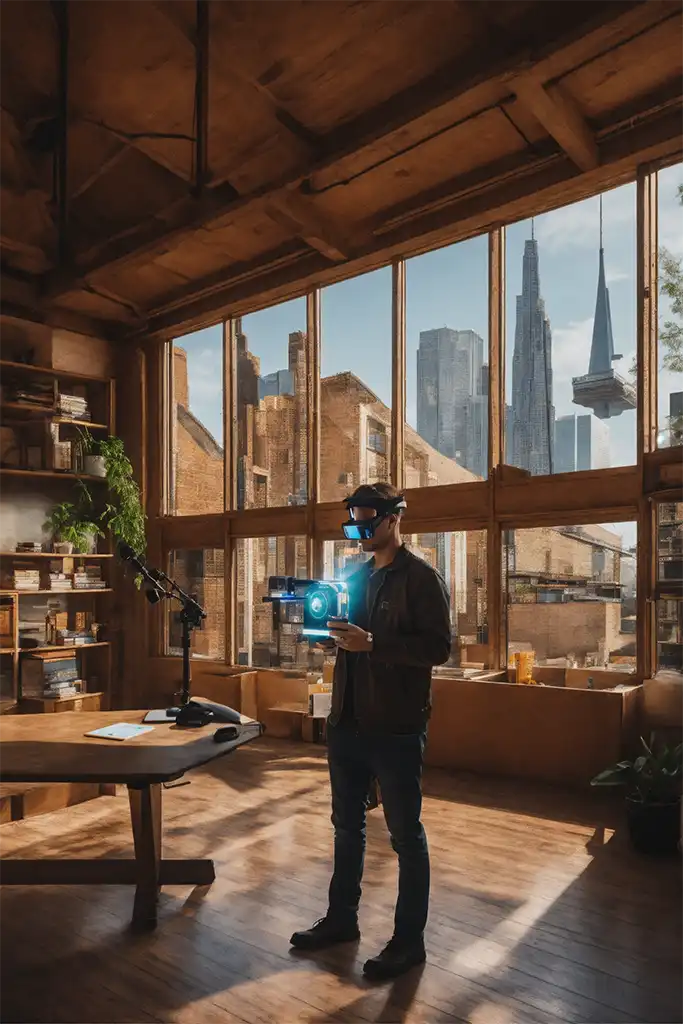

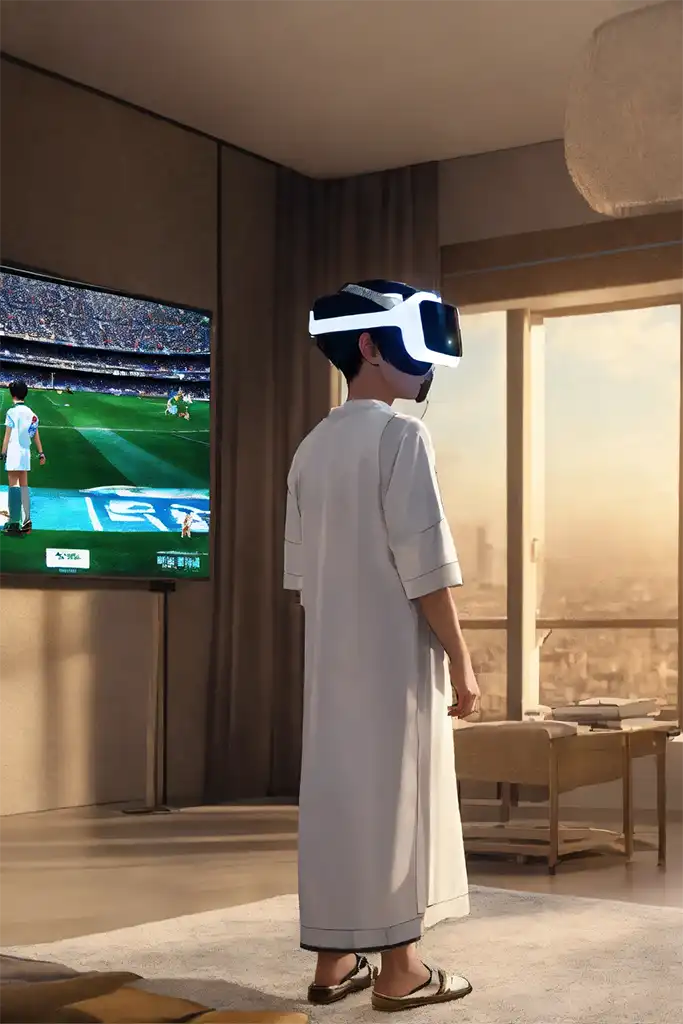

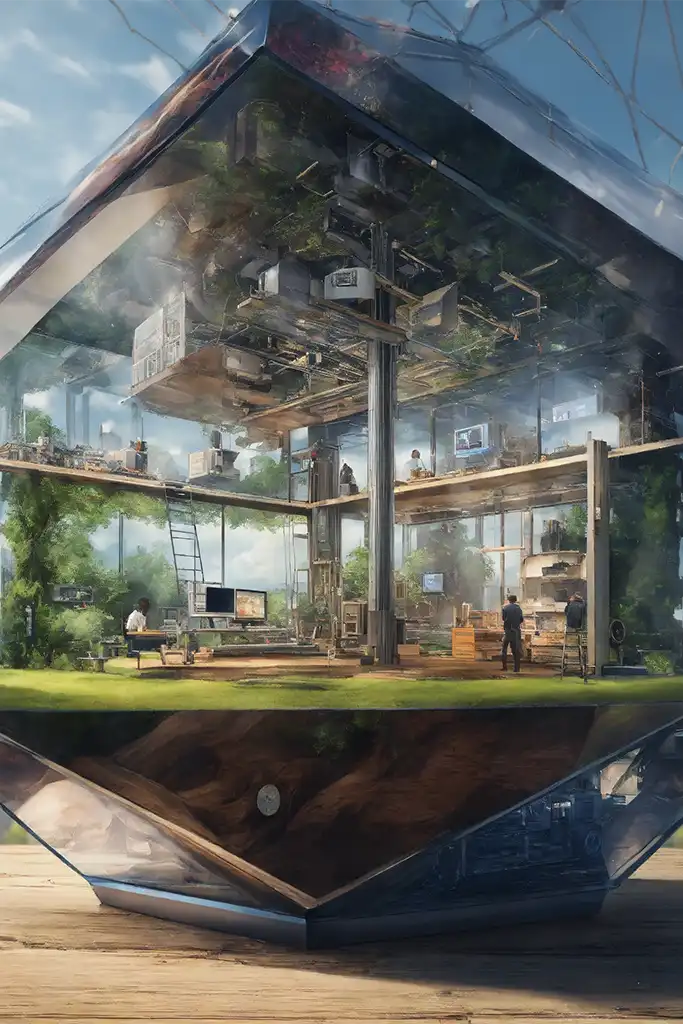

How Virtual Reality Can Benefit Brokers and Agents
Virtual reality (VR) technology is revolutionizing the real estate industry, offering countless benefits for both brokers and agents. For brokers, VR technology can help simplify the management of larger portfolios by making business decisions more efficient and informed than ever before. Agents are finding that clients can get a better sense of a property virtually than they would be able to on a regular tour. By leveraging VR technology, agents can help their clients explore multiple homes without ever having to leave the comfort of their own home.
On the flip side, some may argue that using VR technology is a costly investment that may not be worth the reward. Others may point out that VR cannot truly replace an in-person visit. However, studies have in fact shown that customers who view a property virtually were more likely to make an offer than those who did not [cite]. This suggests that investing in VR technology can lead to increased sales, as well as save agents time and money by eliminating unnecessary visits to properties.
In addition, utilizing virtual reality solutions has been proven to reduce customer confusion and dissatisfaction when buying or renting a home, leading to greater productivity for brokers and agents [cite]. With virtual reality solutions becoming more widely available and affordable, this makes now the perfect time for any broker or agent looking to incorporate this powerful tool into their workflow processes.
As brokers and agents become familiar with how VR real estate works, they will become more comfortable in helping their clients tour properties with these new tools. The next section will discuss further how these tools can be utilized effectively when exploring potential properties virtually.
Helping Clients Tour Properties
While virtual reality is an incredibly helpful tool for agents and brokers to make more informed decisions when guiding potential buyers, it also provides clients with opportunities not previously available. Utilizing VR technology in the real estate field offers a level of access that has never been seen before, allowing clients to tour properties from any physical location — a valuable advantage for long distance home seekers. Potential buyers are no longer limited to only seeing the images or videos of homes online – now they can take a walk-through of the entire space without even leaving their home.
Furthermore, in areas where property viewing may be dangerous due to environmental conditions such as extreme temperatures or even some political conflicts, VR technology allows agents to provide secure and safe experiences for people who cannot physically participate due to these external factors. This helps unlock certain properties for sale to many more interested buyers than was possible before.
The convenience and accessibility provided by virtual reality technology for potential homebuyers revolutionizes the traditional property viewing process, making them far easier and safer experiences than they were before. By equipping agents and brokers with the tools necessary to give their clients access to remote sites with VR capabilities, not only will brokers have an edge over competitors, but they can also ensure that each client’s needs and interests are taken care of quickly and efficiently. With this newfound power of leverage comes an increased responsibility to show genuine commitment in providing quality services and superior customer satisfaction.
On top of increasing buyer confidence by delivering an immersive experience like none other, using Virtual Reality technology also helps reveal suspicious discrepencies between details listed on paper versus what can be observed virtually – this extra layer of protection urges caution against fraud listings and fake details appearing in the real estate market.
Helping clients tour properties efficiently via virtual reality is a game-changing practice which opens up numerous opportunities for both buyers and sellers alike while establishing trust within the transaction process. In order to maintain this bridge between parties involved in the deal, investments must be made into marketing strategies that elevate the buying/selling experience through new technologies. To that end, let us explore how we can capitalize on such investments in our next section.

Marketing Investments in Technology
As the real estate market continues to grow exponentially, investements in technology are becoming increasingly important. With virtual reality (VR) technologies, marketing your services and properties will become more efficient for real estate agents. In many ways, marketing investments in technology can be beneficial for real estate businesses.
First, digital marketing with VR real estate technology will be faster and more accessible than traditional marketing techniques. Agents will be able to provide potential clients with virtual tours of the properties they’re interested in — right on their own devices! This eliminates the need for physical visits and makes it more possible to promote your services through other platforms such as social media or email campaigns.
Second, these technologies can provide a competitive advantage over other real estate businesses that do not use them. Not only do they make it easier to advertise and showcase properties remotely, but since they are relatively new technologies, using them could set your business apart from others in the area.
Despite the obvious advantages of embracing newer technologies, there are also risks associated with investing too heavily in such solutions. Investing too much money in developing new VR tools could drain your budget without having a return on investment — which is why it’s important to assess how much you need before committing to anything. Additionally, advances in technology happen quickly and what works today may not work tomorrow; keeping up with the changing platform could require substantial resources that some small-scale businesses might not have available.
In summary, leveraging any technological development has its benefits and risks; however when done strategically investing in VR technologies can help your business stand out amongst competition by providing access to modern features like virtual tours. While this transition should not be taken lightly and should not involve too much risk taking, it is worth exploring if done properly because these tools will continue to evolve even further in the future and used effectively may be what sets you apart from the competition going forward. With that being said, it is now time to shift our focus on how these new VR tools will ultimately affect buyers and the entire local real estate market — part of what we’ll discuss next.
A 2017 study found that 65% of realtors believe that virtual reality tours will have a positive impact on their business.
A 2018 survey showed that 84% of consumers surveyed said they would like to use a virtual reality tour when buying or renting a property.
According to Forbes, the global virtual reality market for real estate in 2019 was valued at $845 million USD and is projected to grow to more than $3 billion by 2025.
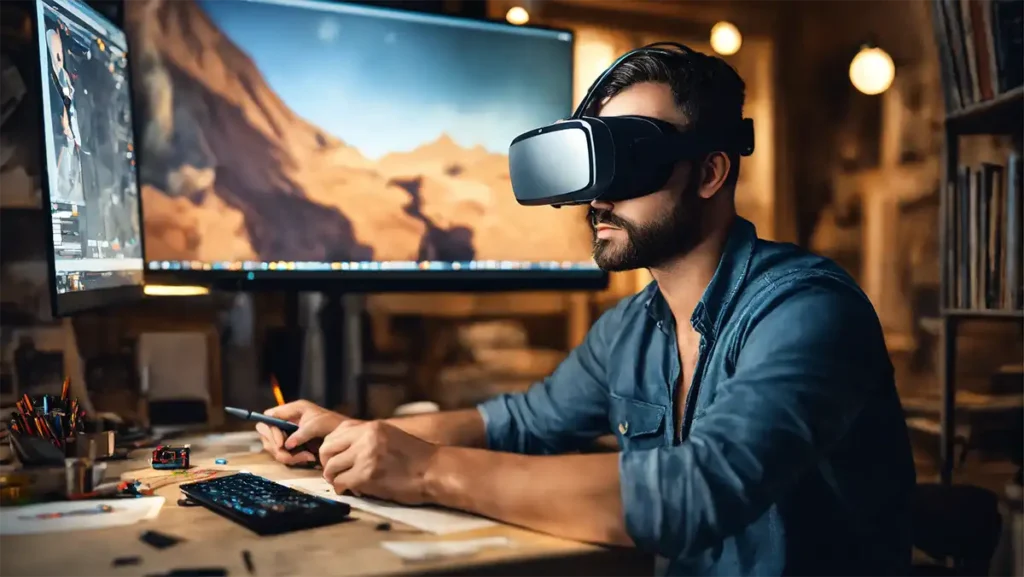
Impact on the Market and Buyers
The investments in virtual reality technology for real estate purposes has had a sizeable impact on the market and buyers alike. Proponents of the technology argue that it allows buyers to get a better sense of the space within an affordable cost for them and a quicker time frame than physical visits. Consequently, this may result in quicker transactions, since buyers can visualize their life in potential homes before sinking money into a real-estate purchase. It is also argued that this technology can invite more people from all regions and levels of income, as they don’t need to invest much money or time to see the property available from different locations.
On the other hand, many have raised legitimate concerns over the demise of personalized experiences through tours with expertise from agents and designers. For example, while virtual reality emphasizes what a room could look like, it cannot accurately capture creativity that is brought out when looking at a physical space through décor and furniture; something agents can easily do with ease while having face to face conversations with potential buyers. Therefore virtual reality technology may fail to give proper representations on certain details, which are best noticed in person.
At this moment its too soon to tell if these technologies will become fully adopted by real estate industry, but certainly virtual reality has provided incentives that would help streamline the buying process for all types of consumers. And although there are strong debates over each side, these debates largely focus on the idea of long term investments verses short term payoff.
It’s evident that investing in technology enhances the visibility associated with exploring real estate options. Now let us shift gears towards reaping those benefits to gain legitimacy in this ever changing landscape.
Reaping the Technology Benefits
As the real estate industry adapts and innovates in order to stay competitive, embracing virtual reality technology can bring significant benefits to both buyers and sellers. For buyers, the ability to tour a property without being physically present presents an advantage – they can view a property in great detail from around the world if need be. This could eliminate much of the tedious task of physically traveling to the desired location to evaluate the property. Real estate agents can also reap the rewards of this technology by utilizing it to better showcase listings and improve their ability to engage with potential buyers.
At the same time, there are some potential drawbacks that arise when incorporating this new technology into the marketplace. Virtual tours cannot always provide a true representation of what it’s like to stand inside of a property, as it lacks certain nuances that are necessary for a complete impression. Buyers may still have to travel to visit certain properties if they need more than virtual assistance in evaluating a location.
In spite of these drawbacks though, virtual reality offers real estate professionals an opportunity to revolutionize how they approach buying and selling homes. In addition to improvements for showcasing listings, having access to research regarding existing properties and bids on land will be valuable resources that have yet to be tapped into. This puts real estate agents in prime position to make sound decisions with detailed insights they couldn’t access before this technological advancement.
The widespread use of virtual reality in real estate can provide tangible market advantages that open up new possibilities across the board. Combining these advancements with traditional strategies is sure to redefine how buyers engage with properties while offering them an improved viewing experience like never before. As buyers and sellers become increasingly familiar with this technology, they’ll likely seek out agents that offer VR services during their transactions which could be beneficial for those who take advantage of early adoption opportunities. With many applications now available for seamless integration within the market, staying ahead of emerging trends will only become more important moving forward.
The implications of virtual reality technology represent just another step forward in modernizing the real estate industry, but even bigger opportunities lie ahead in finding the perfect virtual reality real estate properties for buyers and sellers alike.
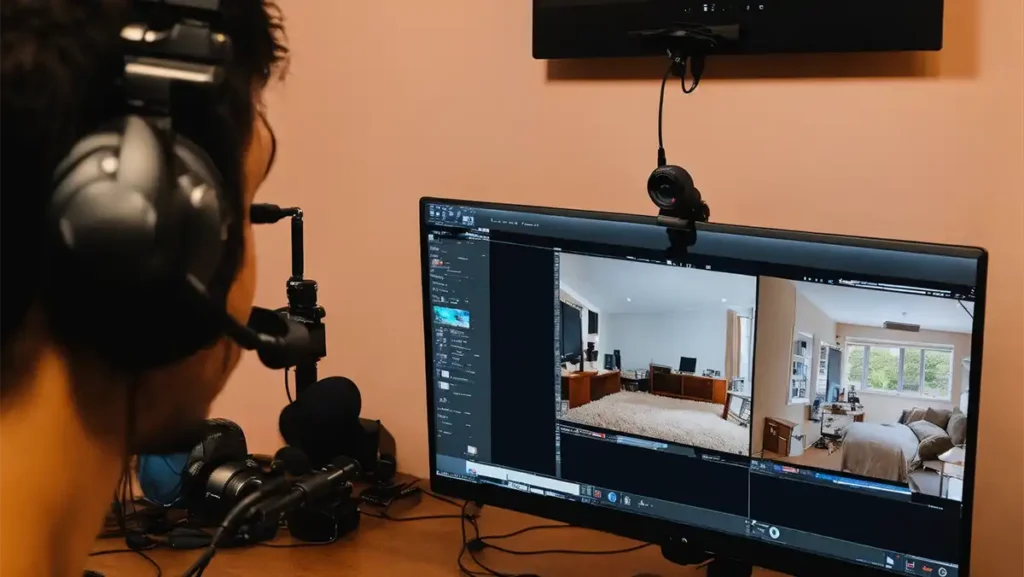
Must-Know Points to Remember
Virtual reality technology is an increasingly important tool in the real estate industry, with potential benefits for buyers and sellers alike. Buyers can view properties without having to be physically present, while agents can use this technology to better showcase listings and engage with potential buyers.
However, while virtual tours have their advantages, they cannot always provide a true representation of what it’s like to stand inside a property. In spite of these drawbacks, virtual reality offers real estate professionals an opportunity to revolutionize how they approach buying and selling homes, giving them access to research and bids on land that were not accessible before. Moving forward, more real estate agents are likely to implement virtual reality into their services as buyers and sellers become increasingly familiar with this technology.
Finding Virtual Reality Real Estate Properties
With the rapid rise of virtual reality, real estate agents are now taking advantage of this technology to reach their clients and give prospective buyers a preview of what they can expect when making an investment. Finding virtual reality real estate properties is relatively easy with the right research.
Real estate agents may be able to show virtual home tours, allowing buyers to get an inside look at properties from their own living room instead of scheduling in-person visits. Agents can also present 360-degree images of the interior and exterior of properties, providing buyers with a comprehensive look at what they may be buying. Finally, agents can even create 3D renderings of potential projects to give customers an idea of what changes they might make in a home or building they may purchase.
Some people, however, debate whether virtual reality is actually beneficial for finding real estate. They point out that nothing quite compares to actually walking through a space and feeling how it looks and functions in person. Furthermore, there are some risks associated with mistakenly believing what one sees in VR; a customer may see a space differently than it is if an agent has enhanced the visuals.
Supporters point out that virtual reality does eliminate much of the extra time associated with viewing multiple properties, running back and forth between locations due to its enhanced visuals – something that’s not possible without physically visiting the location itself and not every property might be worth the drive-by visit. With virtual reality viewers can also quickly compare floor plans or visualize how furniture will work in a narrow hallway or kitchen area. These elements are important for prospective buyers trying to make an informed decision on their next purchase.
In conclusion, finding virtual reality real estate properties gives customers many options when making their next investment decisions while still operating within safe boundaries guided by experienced agents who understand everything one needs to know about the market before investing in physical property. Virtual reality offers something unique by allowing customers to deeply explore each property with ease while making sure they find exactly what they want without traveling extensively or taking unnecessary risks during the process.

Common Questions and Answers
Are some real estate companies adopting virtual reality for tours and marketing purposes?
Yes, many real estate companies are increasingly adopting virtual reality (VR) technology for tours and marketing. As VR becomes more accessible and affordable, real estate companies are finding it an attractive option to reach potential buyers and tenants remotely. For example, they can create immersive 3D tours of properties that allow viewers to explore the space with ease from a remote device, such as their phone, tablet, or computer.
Additionally, VR allows agents to create “stereoscopic virtual walkthroughs” of the property, which provides a realistic view from any perspective in the room. Finally, top-notch virtual reality systems can also be used to generate renderings and simulations that show clients precisely what investing in a specific property would look like with changes in furniture or potential improvements. All of these features make VR an attractive tool for real estate marketers and tour guides who are looking to create an engaging and immersive experience for their customers.
What are the advantages of using virtual reality technology in real estate?
The advantages of using virtual reality technology in real estate are numerous. Firstly, it makes the process of house hunting much more convenient and enjoyable for prospective buyers, as they can do a virtual walk-through from the comfort of their own home. Secondly, it provides the opportunity to showcase properties to wider audiences without the need to physically move people around, saving money on travel and time.
Thirdly, VR technology allows estate agents to display features of properties in an interactive way that is engaging and exciting. Finally, it eliminates many common misunderstandings between buyers and sellers by helping everyone visualize more accurately what the property looks like inside and out. All in all, virtual reality has made major advancements in the field of real estate, giving agents a unique edge over their competition and increasing efficiency in sales.
What is the current status of virtual reality in the real estate industry?
The current status of virtual reality in the real estate industry is rapidly changing and evolving. VR technology is being used to allow potential buyers to virtually tour properties, get detailed information on the interior and exterior of a property, see 3D floor plans, explore neighborhoods, interact with agents, and even test products within their prospective homes.
For potential buyers, using virtual reality can help them make better decisions as they can get a much clearer understanding of a home before actually stepping foot inside it. On the seller’s side, 3D tours or VR video walkthroughs help keep listings fresh and exciting in an increasingly digital real estate market.
However, while VR technology has come a long way in modernizing the real estate industry, its challenges remain such as cost barriers due to expensive equipment that may be needed to create realistic 3D models for virtual tours. Additionally, there are also data security concerns with housing data being turned into VR experiences. Nonetheless, as technology advances and becomes more accessible we will continue to see increased utilization of virtual reality in the real estate industry.
You may like
Virtual Reality
Affiliate Programs For Virtual Reality (VR)
Published
3 weeks agoon
October 30, 2025By
VRLOL
VR affiliates programs
Virtual Reality (VR) is one of the hottest technology trends. It’s a powerful marketing tool for both small and large companies.
AR and VR immersive technologies offer innovative marketing opportunities, such as interactive product visualization and improved try-before-you-buy experiences. They can also deliver personalized shopping trips and increase conversion rates.
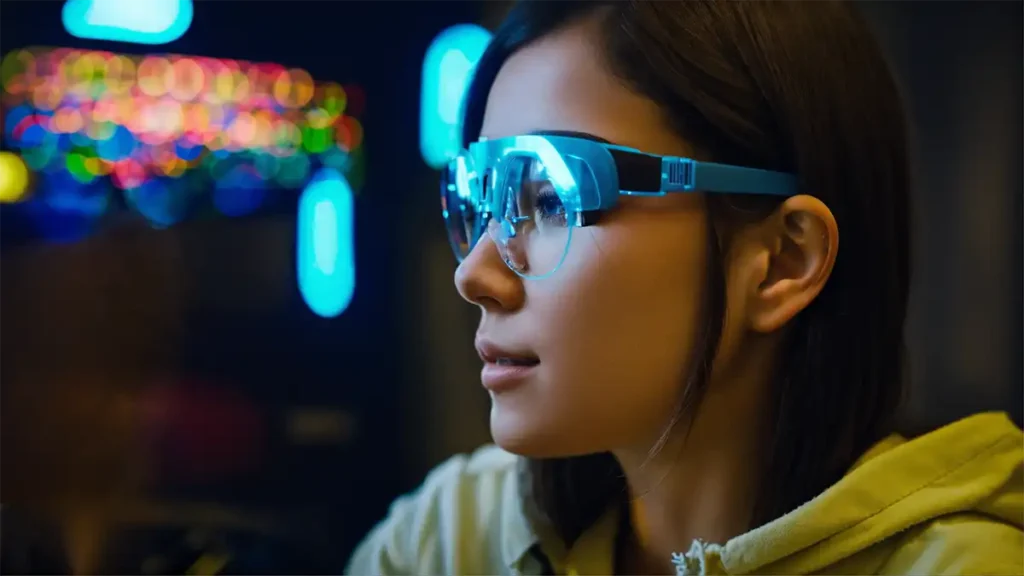
Insta360
Insta360 is the world leader in 360-degree cameras, enabling people to share full, immersive, vivid experiences regardless of time or place. Founded in 2014 and immersed in Shenzhen’s hardware ecosystem, Insta360 develops specialized products that push the envelope of performance and accessibility. Their innovative cameras enable users to capture 360-degree photos and videos and live-stream them on Facebook and Twitter.
In addition to 360-degree cameras, Insta360 also produces software and accessories. Their software allows users to edit their content on a desktop platform, while their mobile app will enable users to reframe footage and add music or sound effects. They also provide a wide variety of lenses and mounts for their cameras.
The company’s latest camera, the ONE X3, is an update to their ONE X. It features dual 1-inch sensors for a sharper image and better low-light performance. It also has a new battery base and a mounting bracket to secure the camera. The X3 is great for professional photographers who want to create high-resolution 360-degree videos.
Unlike traditional video, 360-degree videos can be edited in several ways. This means you can use the camera to create cinematic shots or highlight essential video elements. Adding music and sound effects is also easy, and you can even use the camera’s built-in filters to adjust the colour and exposure of your video.
Insta360’s smartphone apps are designed to make editing 360 content more accessible than ever. Their desktop software, Insta360 Studio, is available for Mac and Windows platforms. The mobile app for iOS and Android offers several tools to help you edit your 360 videos, including various editing effects such as nose cam, sky swap, and street lapse. It also has tutorials to teach you how to use the different tools.

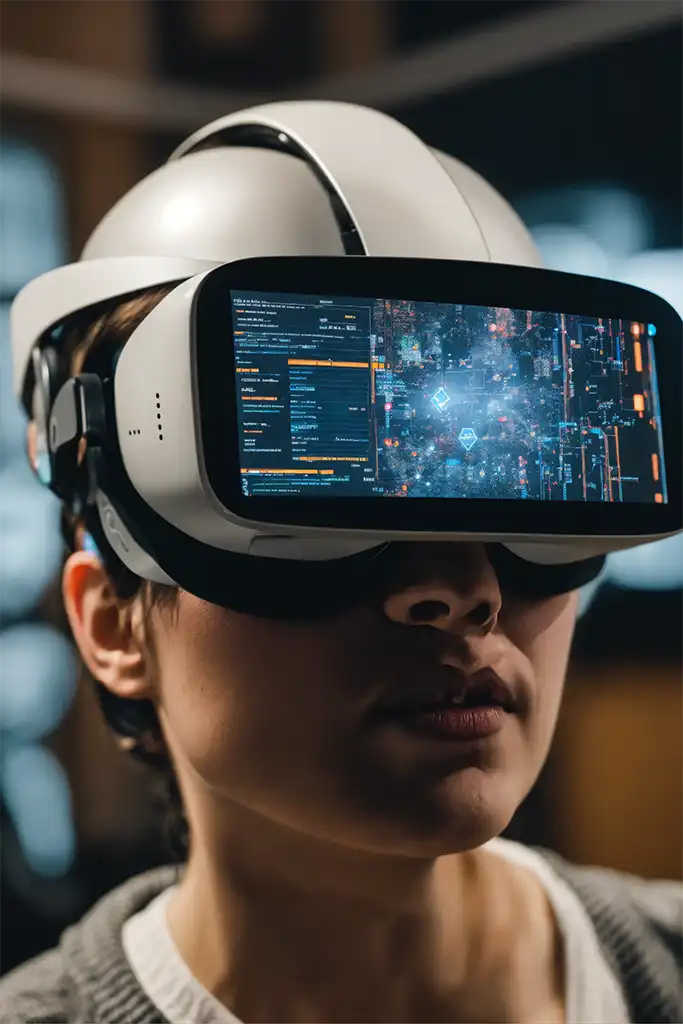
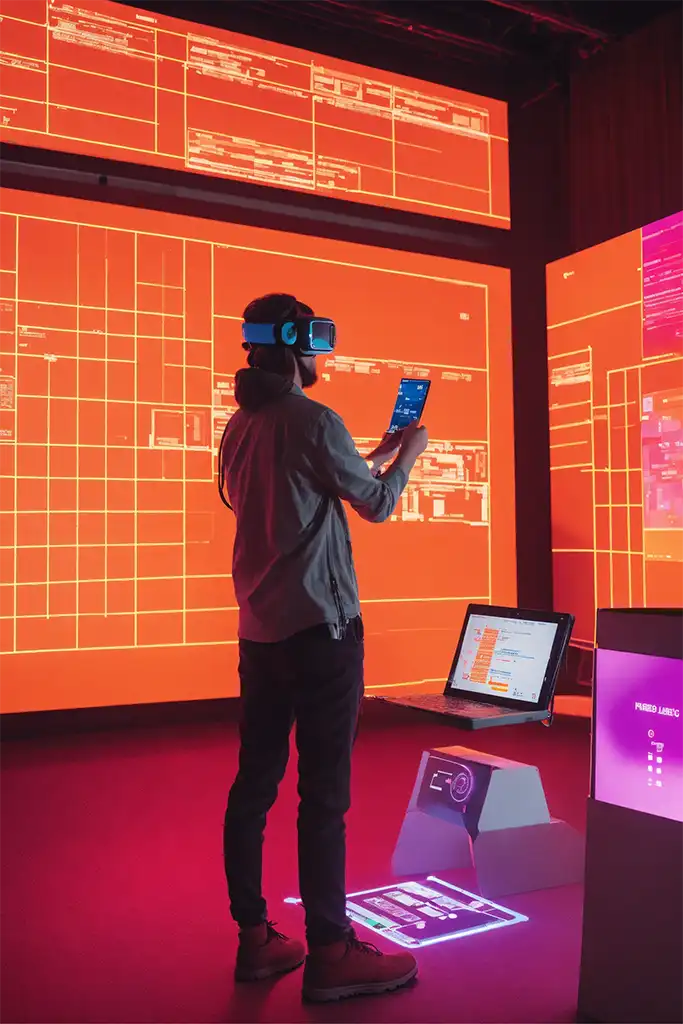

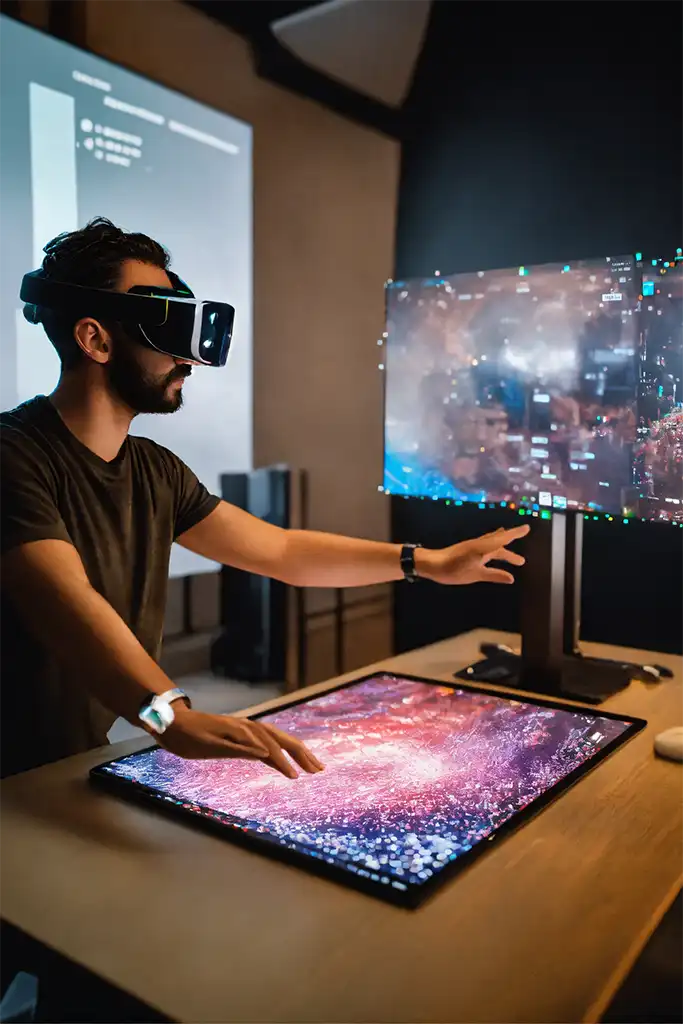
Reveal
You can make a lot of money with the correct VR affiliates program. Many adult VR porn websites have recurring monthly revenue, which means that you get a percentage of the subscription every month for as long as the user is a member. Other programs offer a one-time commission on the product’s sale, a great way to boost your earnings.
Revealio is an augmented reality video marketing mobile application that overlays video on physical print products such as business cards, banners, posters, flyers, and event invitations. It is a great way to connect with customers and build relationships. It is also a unique differentiator that can help businesses stand out.
VR Cover is an online store that offers several virtual reality accessories and cleansers to keep headsets sanitary. Their primary products include foam replacement parts for brand-name headsets like Oculus, HTC Vive, Samsung, and Microsoft Windows Mixed Reality. These pieces increase comfort and allow for easy cleaning. They are available for purchase online, and most orders are processed and shipped within 24 hours.
MobFish VR Studio is a virtual reality software company that allows users to create content. Its software is used for various applications, from entertainment to trade fairs. Its affiliate program pays cash or credit commissions and offers a free 3-month trial and discounts on full annual licenses. The company is based in Thailand, but its fulfilment centre is in the United States.
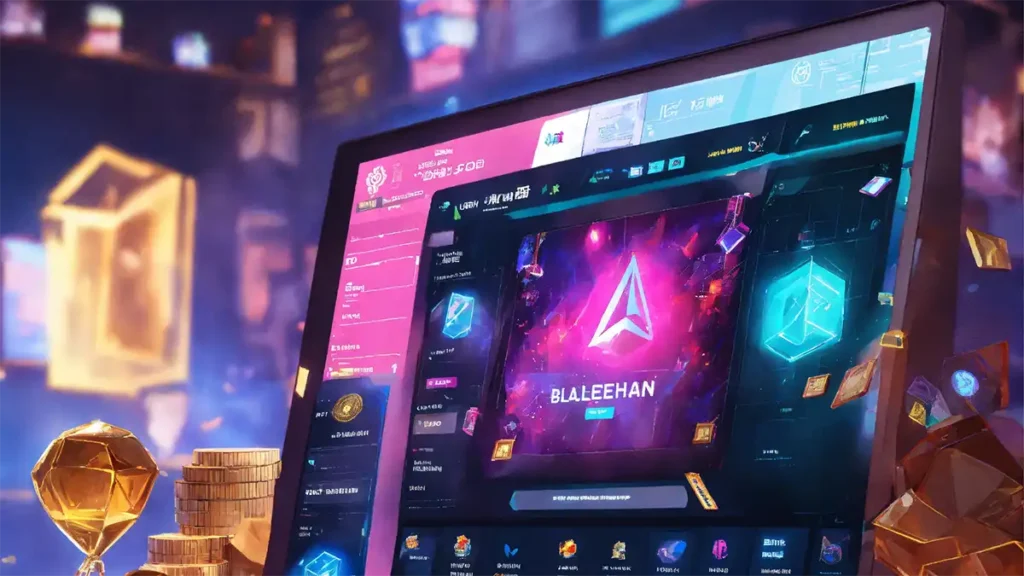
VR Cover
If you’re a VR enthusiast, you may be interested in learning about a new virtual reality affiliates program called VR Cover. This company offers a variety of hygienic products that can keep your headset clean and fresh during gaming sessions. These products include a foam replacement for your headset, antibacterial wipes and other accessories. They also offer a subscription-based service that allows you to receive regular deliveries of these items. This is a great way to save money while still getting high-quality products.
This product helps protect your headset from dirt, sweat, and hair. It is made from 100% cotton and wicks away moisture to prevent build-up. It is an excellent choice for active gaming and is machine-washable. It fits perfectly around the facial interface, making it easy to install and remove between uses.
The Oculus Quest 2 can get sweaty during gameplay, especially in games like Beat Saber. The default foam pads are not very comfortable or sanitary, so it is essential to invest in an alternative. VR Cover’s PU leather replacement is an excellent choice for this reason. These pads are softer and more plush than the originals and are designed to be cleaned, wiped down, and replaced. The product also has a rubberized nose piece cover to block out additional light.
The company’s products are available online and in stores. They sell several types of VR headsets, cleaning products, and other accessories. They are trendy in Thailand and the United States. Their products are available in various languages, and the website is user-friendly. VR Cover also has a blog with articles about virtual reality and its applications for multiple industries.
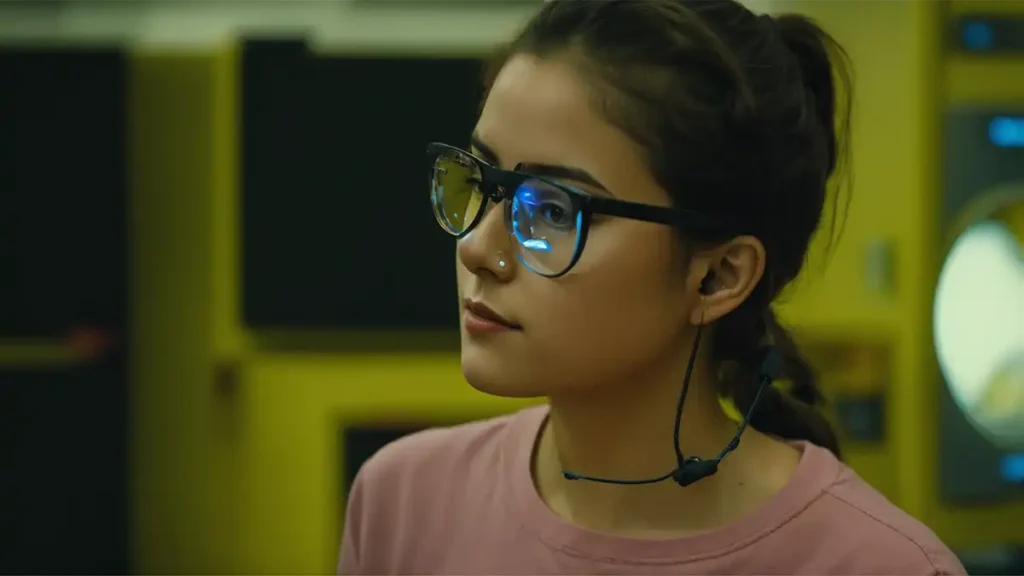
MobFish
Virtual reality is a growing niche, and affiliates need to be able to promote various products and services in the space. This will help you increase your overall earning potential and create a more diverse portfolio of services. For example, if you’re an affiliate focusing on travel, you might want to promote VR headsets and travel booking websites. This will give your readers a more complete and immersive experience when they book their next trip.
The MobFish VR Studio is a virtual reality software company that offers a variety of solutions for different industries. Its software can be used for various purposes, from education to marketing and trade fairs. Its platform is available for mobile and desktop devices and has a free but limited version to get started. Its monthly paid plans range from EUR49-EUR399.
Mobfish Hunter is a VR game that lets players explore the ocean and search for treasure. The game’s controls are simple and intuitive. Players simply tilt their device’s screen to move their ship. The game is fun and has some cool backgrounds to look at.
There are many VR affiliate programs to choose from. Several of them offer competitive commission rates and cookie lifetimes. Some also feature multiple payment methods, making them ideal for international affiliates. Some of the most popular include Awin, ShareASale, and CJ.
Awin is one of the largest affiliate networks, with over 22,000 merchants and an average order value of $125. It is an excellent choice for affiliates interested in selling virtual reality products because it has various payment options. It also has several promotional tools, including banner ads and text links.

Logitech
Logitech is a world-renowned gaming brand that offers a wide range of products for gamers and other digital enthusiasts. Their commitment to quality and innovation makes them an ideal choice for affiliates who want to promote their gaming products. In addition, they provide valuable resources for their partners and affiliates to help them grow their reach and attract new customers.
The company has an excellent affiliate program that pays commissions on the first sale of each visitor, regardless of the number of subsequent visits to their website. This is a great way to maximize your sales and earn more money from your marketing efforts. In addition, the company provides detailed reports that show the traffic and sales activity on your website.
To maximize your earnings as an affiliate, following the rules and guidelines set by the Logitech affiliate program is essential. These include consistently using your site’s Logitech logo and brand name, ensuring they are visible to your audience. It is also necessary to use the logo in a size consistent with their branding standards.
Logitech is a Swiss-based technology company that creates innovative products that connect people with the devices they use to control their world. Their award-winning products range from computer accessories and tablets to video games, audio, and home entertainment devices. Their innovative technology helps people get immersed in the digital world and keeps them connected with their loved ones.
Virtual Reality
Explore the Virtual Reality Scene in Chicago – Where to Go and What to Do
Published
1 month agoon
October 21, 2025By
VRLOL
Virtual Reality Chicago
The excitement around virtual reality is only growing in Chicago! If you’ve been wanting to explore the virtual reality scene in this great city, you’re in the right place. From the biggest and best VR arcades and escape rooms to VR events and interactive experiences – this post will have you well-equipped with all the insider knowledge about the virtual reality scene in Chicago. Whether you are a VR enthusiast, fanatic, or just getting started – you won’t want to miss out on something amazing! So suit up and get ready to virtually explore the wonderful world of virtual reality in the Windy City.

Quick Breakdown of Key Point
There are a number of virtual reality experiences available in Chicago, including at arcades, entertainment centers, and museums. It is best to search online for reviews before taking part in any virtual reality experience.
What is Virtual Reality?
Virtual reality (VR) is an artificial, computer-generated simulation of an interactive three-dimensional environment. It merges real and virtual worlds to create a realistic, immersive experience. Through advanced technology, VR immerses the user in a world where they can interact with their environment. This has the potential to provide new experiences for entertainment, education, and other fields of study.
The use of VR has seen increased popularity and advancement in recent years with its potential for providing enhanced experiential learning opportunities, improving physical therapy sessions and medical training simulations, and creating captivating experiences in gaming, movies, and other forms of entertainment.
On the other hand, there have been some concerns that VR technology could be used to create excessively violent or graphic simulations which may negatively affect users. Similarly, some worry about how this technology can dehumanize the natural tenets of human interaction due to its isolated nature.
In response to these worries, many companies are putting regulations in place to ensure user safety when using this technology. These measures are meant to safeguard the public from potentially harmful effects while still allowing them to benefit from the many advantageous aspects of virtual reality.
Despite any potential risks or drawbacks associated with it, virtual reality shows significant promise for providing users with exciting and educational experiences unlike anything achievable without it. As we take a closer look at the flourishing VR scene in Chicago, we can uncover more of what this promising technology has to offer visitors from near and far alike.

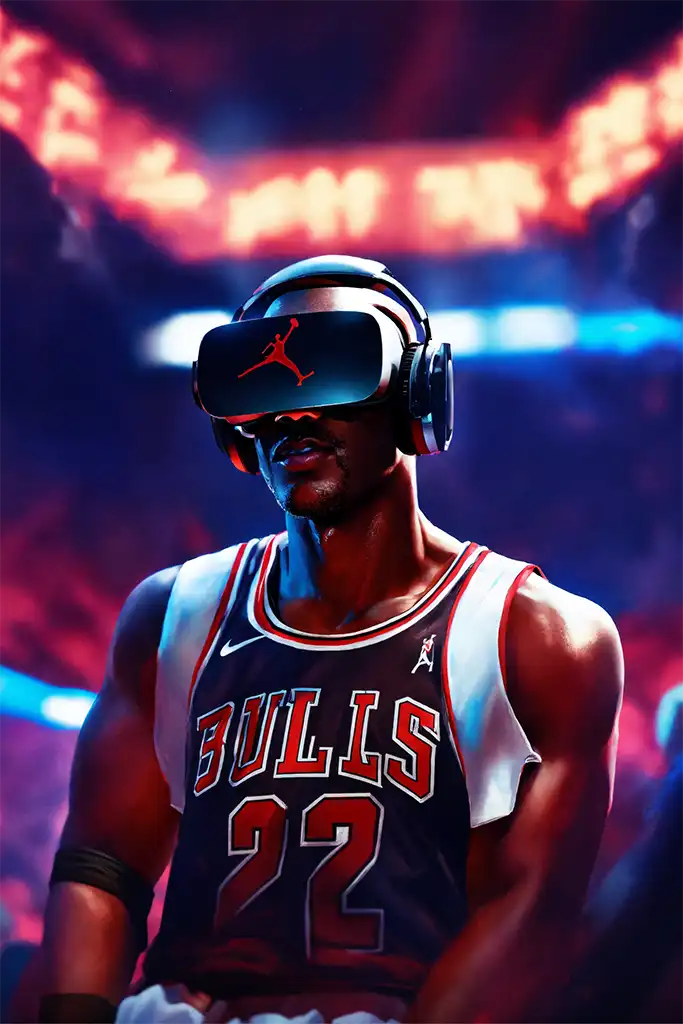
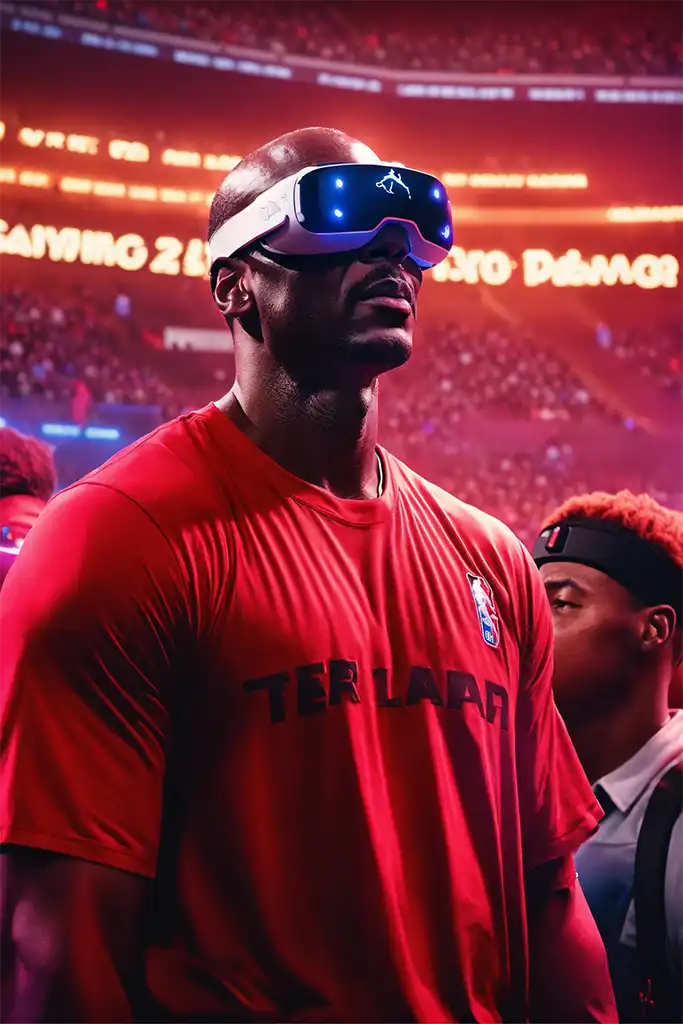


Highlights
Virtual reality Chicago (VR) is a computer-generated simulation of an interactive environment with potential applications in entertainment, education, therapy, and more. Although there have been some concerns about its effects, many companies are taking measures to ensure user safety, allowing users to benefit from the advantageous aspects of VR. Despite any risks associated with it, this technology promises to provide exciting and educational experiences that can not be achieved without it.
Virtual Reality in Chicago
Virtual Reality Chicago is the latest disruptive technology to enter the entertainment and gaming landscape. With VR, users are plunged into a fully immersive simulated reality which can be more engaging than traditional forms of entertainment. The availability of this type of technology has exploded across the country, but Chicago stands out as one of the leading hubs for virtual reality (VR).
One of the core arguments for using VR surrounds its ability to create a truly engrossing experience which can provide an invaluable learning opportunity. Proponents argue that by simulating scenarios that would be impossible or dangerous in real life teaches people valuable skills in risk assessment and decision-making, and provides a unique way to explore history and culture. Those who oppose the use of VR argue that it is an overly immersive method of learning and is potentially damaging to users on account of its total sensory immersion.
Thankfully, there is no shortage of ways to explore virtual reality Chicago – from pop up arcades at shopping malls and attractions such as Board Room VR, which offers gamers access to over 30 high-resolution gaming systems in over 30,000 square feet of gaming space, to companies like EmpowerMI which offers a variety of educational packages involving virtual reality. This vast selection gives individuals access to a variety of experiences with educational aspects, as well as fun activities such as team building games and puzzle challenges.
While VR has plenty to offer as far as educational entertainment goes, some experts have questioned how effective it is for teaching basic skills compared to traditional methods such as books and lectures. Unsurprisingly, this argument is complex and involves many factors such as individual preferences, cost considerations, accessibility, etc. Nevertheless, the potential benefits make it worth exploring further. In our next section we will look at how educators are utilizing virtual reality apps & games to help engage learners both inside and outside the classroom environment.

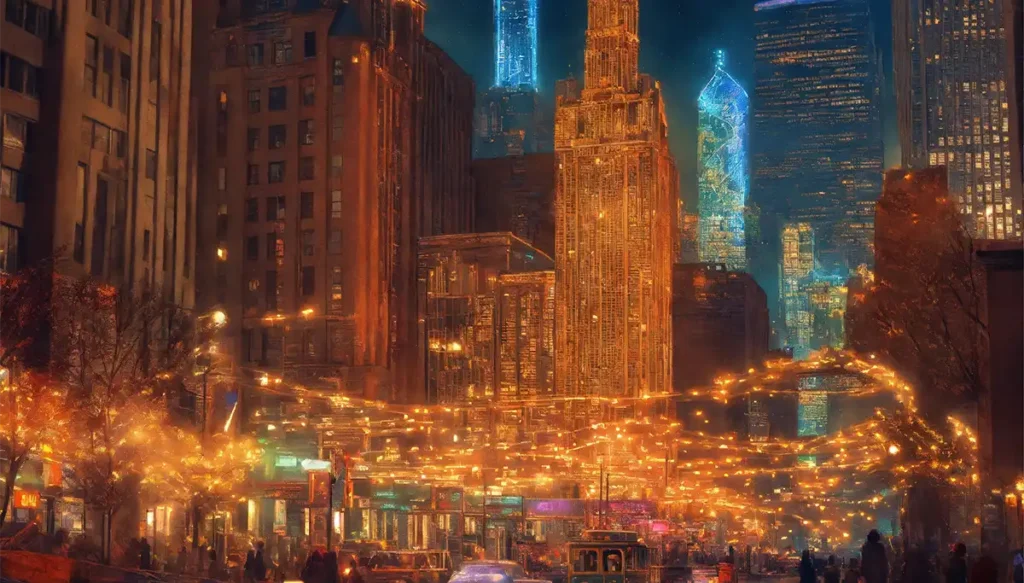
Educational Apps & Games
The educational components of virtual reality in Chicago present an entirely new world of possibilities for learning. VR technology can give users the ability to explore different settings, back in time or into the future, and observe various environments from a first-person perspective. This can be applied to a variety of fields for educational purposes, particularly science, history, English literature, and other social sciences.
Some of the most popular applications and games used in educational settings are based on space exploration. These allow students to virtually travel through the universe and explore thousands of planets while learning about astronomy. The immersive experience provides a much more engaging way of understanding facts than traditional lectures or textbooks. Additionally, simulations have been developed to recreate historic events like battles from World War I and II, giving viewers the chance to see how they unfolded firsthand.
A frequent argument expressed against implementing virtual reality Chicago in classrooms is that it could be potentially distracting to students or take away from teaching skills that cannot be replaced by technology. Proponents point out that today’s generation grew up with technology being integrated in their daily lives at home and school so they are already well-accustomed to it. Additionally, there have been multiple studies conducted that demonstrate how using virtual reality improves a student’s attention span and deepens their retention of material learned because lessons are presented in a more captivating manner than traditional methods.
In summary, virtual reality Chicago is making great strides in incorporating virtual reality into educational activities for both students and teachers alike. Although there may be some concerns over its effectiveness, the results thus far indicate positive outcomes and illustrate why this has quickly become one of the most sought-after alternatives to more traditional teaching methods. Now let’s shift our focus to one of the most popular pastimes: entertainment experiences with VR!
A study conducted in 2019 found that the global market for virtual reality is expected to grow from $7.9 billion in 2020 to $44.7 billion by 2024.
According to a survey conducted on 500 virtual reality users, 75% of respondents found that the technology had therapeutic benefits.
In 2018, a survey conducted on 500 virtual reality users in North America found that 67% of them were between 18 and 34 years old.

Entertainment Experiences
The entertainment experiences Chicago has to offer in terms of virtual reality are vast. From family friendly experiences to popular nightclubs, the range of options is endless. One of the most popular entertainment experiences in Chicago is its array of interactive arcades. They appeal to a wide range of demographics including children, adults, and even seniors. Whether you’re looking for something casual or something more intense, the variety of VR games available at these arcades will leave you wanting more.
Alongside the interactive arcades, there are also several popular VR nightclubs that feature everything from classic rhythm games to racing simulators designed to get your heart racing. Dependent on the club you visit, some may focus on specific genres while others may offer a wide variety of games, allowing you to find something that suits your taste. No matter what level of gaming experience you’ve had in the past; whether beginner or pro, these clubs have something for everyone to enjoy.
Furthermore, there are also several festivals and events organised throughout the year which aim to explore a variety of virtual reality experiences in Chicago and around the world. With varying themes each year, these events provide an opportunity for audiences to interact and share their love for VR.
It’s clear that no matter what your preference may be, there is something for everyone within the expansive virtual reality scene in Chicago. But it’s not just about entertainment; another important part of this scene is about innovation and collaboration which leads us into our next section about some of the most popular VR companies located in Chicago.
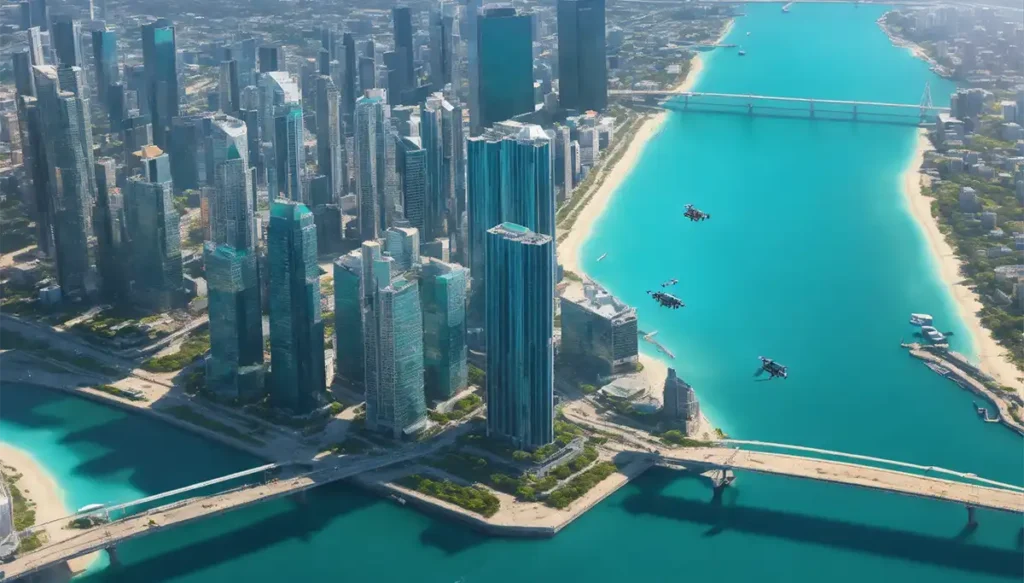

Popular VR Companies in Chicago
As the virtual reality scene in Chicago rapidly grows and evolves, notable companies have taken the lead in offering immersive entertainment experiences that have captivated locals and visitors alike. Among them are Illuso, Glo Station, and SuperHyperCube.
Illuso is a full-service virtual reality studio specializing in creating custom-made environments for events, parties, conferences and more. It offers a variety of different content that immerses guests into the experience through haptics and interactive scenery. Furthermore, Illuso can make your event come alive with the help of their talented team of experts.
Glo Station is another popular VR company in Chicago that provides state-of-the-art virtual reality gear to customers for an out-of-this-world experience. From shooting robots to tracking dinosaurs on uncharted islands, Glo Station ensures its customers get the most exciting and authentic VR experience imaginable at accessible prices.
Last but not least is SuperHyperCube, which specializes in producing virtual worlds on a grand scale. Using cutting edge technology and creative storytelling, this VR company can create visually stunning scenes that defy imagination – from lifelike underwater creatures to stories about post-apocalyptic zombie cities. SuperHyperCube’s creations will leave you in awe!
The virtual reality scene in Chicago has grown rapidly over the past few years due to these popular companies offering unique experiences for everyone. While these companies offer diverse content, there are even more intriguing opportunities in terms of 360-degree video production when it comes to leveraging the power of virtual reality technology. Beyond stunning visual effects, 360 videos open up new possibilities such as enhanced viewer engagement and improved marketing techniques – making it an incredibly powerful medium for communication.

360-Degree Videos
Continuing on from the discussion of popular virtual reality Chicago (VR) companies, it is important to note that VR can also involve 360-degree videos. This type of video involves a combination of technologies, such as special cameras, 3D video editing software and more, which create an immersive experience for the viewer. As this technology continues to improve and become more widely available, businesses and individuals are increasingly using this technology to create content such as documentaries, movies and even advertisements.
One example of the use of 360-degree video can be found in films such as “The Martian” (2015), where a choose-your-own adventure type of movie viewing experience is created for the audience. This type of immersive video technology has also been used by news outlets to take viewers closer to natural disasters like hurricanes and earthquake zones than they would have otherwise been able to accomplish.
360-degree video technology also has great potential in business applications such as training modules, recruitment videos and product demonstrations. Companies can now create highly personalized experiences for their customers at a fraction of the cost it would have taken them before this technology was available. This adds a much higher degree of engagement for customers interacting with a company’s brand.
With so many different ways to explore this medium, there is no shortage of places and destinations around Chicago where one can witness first-hand what virtual reality can do. In our next section we will look into these venues and share what kinds of experiences one can expect to find there.
Places and Destinations to Explore with VR
Traditional destinations like museums, sports venues, and real-building tours are now becoming available with the introduction of virtual reality. Whereas 360-degree videos can provide an immersive experience into these places, actual virtual reality settings let users actively explore these spaces from the comfort of their own space. For instance, in Chicago, visitors can tour The Field Museum using Google Arts & Culture’s virtual platform, allowing them to wander through exhibits like ‘Inside Ancient Egypt’ and ‘Underground Adventure’. Visitors can also explore the luxury Vail Residences at The Four Seasons Hotel via VR Berlin, a popular platform for virtual hotel tours.
For those seeking more adventure and outdoor exploration outside the city limits, they can do so with various apps like UpriseVr National Parks that will transport them across the vast American landscapes right from their living rooms. Here they will find nature walks and educational activities from some of the most iconic parks such as Joshua Tree National Park or Grand Canyon National Park along with vivid stories and interesting facts about each of these destinations.
Although there is nothing quite like actually being at a physical destination, virtual reality presents an easier way to access otherwise unavailable places without requiring money or time away from the comforts of home. As such, there is much to explore in the world of virtual reality starting with Chicago’s range of exciting destinations and activities. And with its many benefits for exploration and education, those who use virtual reality can experience knowledge gathered within seconds versus hours or days while delivering real world results for various applications such as tourism or safety training for hazardous situations. This broadens what’s possible in terms of experiences across different industries while still offering an engaging encounter from anywhere at anytime.
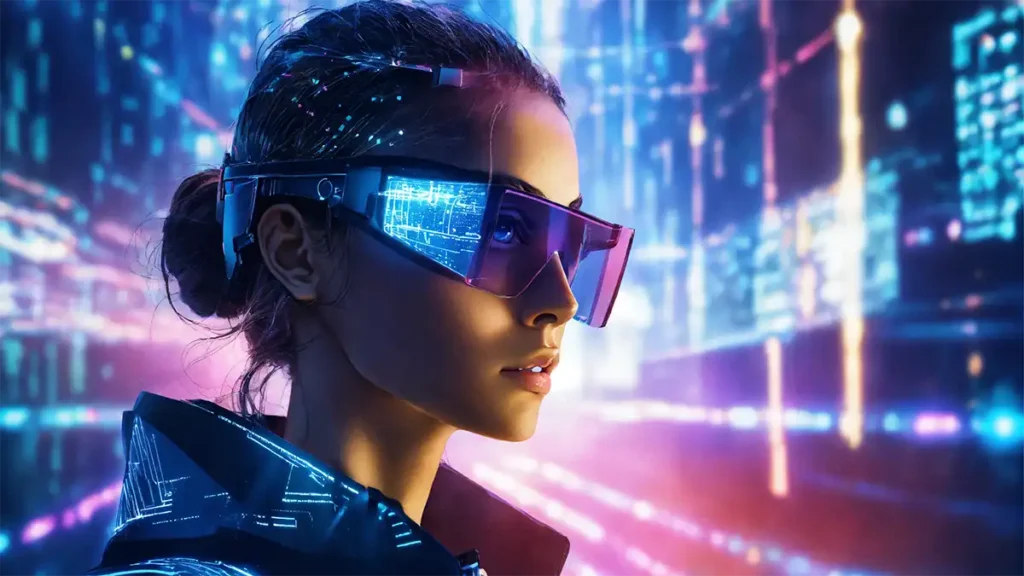
Benefits of Virtual Reality Chicago
The benefits of virtual reality Chicago technology offer a wide range of opportunities and applications. To begin with, the most apparent advantage would be that it enables users to access experiences that were not previously possible due to physical or monetary limitations. With more affordable headsets coming to the market in recent years, Virtual Reality is increasingly becoming an attainable medium for the average consumer. Beyond this accessibility factor, however, VR also has the potential to reduce stress levels and improve well-being. Numerous anecdotal accounts exist citing decreased anxiety, heightened senses of presence, and improved body awareness in Virtual Reality environments.
In addition, the creative possibilities enabled by VR are near-limitless. From educational virtual tours of historical landmarks to interactive simulations of natural phenomena like lightning storms – the size and scope of these experiences can now reach an unprecedented level of detail. This content can be used in schools, museums and other venues – making information about complex topics more engaging for viewers than ever before.
On the industry side, Virtual Reality Chicago presents a huge opportunity for businesses to leverage its potential as an effective marketing tool and open up new revenue streams. Through user insights gathered from VR platforms such as Oculus Home and Viveport, companies have access to valuable data on customer preferences which can influence future projects. Finally, the success of certain titles has given rise to larger investments from venture capitalists looking to capitalize on this hot upcoming trend.
The applications of Virtual Reality Chicago extend far beyond just entertainment – leading us into the next section exploring trends in the industry and how this groundbreaking technology is fostering further growth and expansion opportunities worldwide.

Industry Growth & Expansion
The virtual reality Chicago (VR) field has been rapidly expanding and evolving. As technology evolves at an accelerated pace, more companies are investing in the development of VR products. Over the past decade, the growth in the VR industry has been highly impressive. According to a 2020 report by Statista, there was a 92 percent growth increase in the global VR market compared to the previous year. This statistic highlights not only the increasing interest in and demand for VR but also its successful expansion.
The growth of the VR industry is being supported by increased investments into research and development from businesses as well as venture capitalists. With this influx of funding, software developers can create content that meets consumer demand while boosting progress on new features and capabilities. In addition, platforms such as YouTube and Twitch have become popular outlets for gaming enthusiasts to share their experiences with VR content and attract more followers to use it.
Not only does this increasing network build awareness for users, but it also allows creators to access mass audiences who need different kinds of gaming experiences due to peak demands. Additionally, social media promotion has helped many consumers gain interest in trying out VR applications and exploring what’s available in the world around them.
Overall, experts believe that the virtual reality Chicago scene will only continue its expansion driven by advances in technology as well as increased investments from businesses into research and development activities. While some may debate that extended usage of virtual reality can lead to addiction or lack of real-life experience, there is no denying that virtual reality has come a long way from being just an experimental concept to a worldwide trend embraced by both traditional gamers and tech enthusiasts alike.
Frequently Asked Questions Explained
Are there any age restrictions for virtual reality experiences in Chicago?
Most virtual reality experiences in Chicago have no age restrictions, and they are suitable for all ages. However, there may be certain venues that have a minimum age requirement. For example, certain arcades will require children to be a minimum of 13 years old or older in order to participate in the virtual reality experiences that they offer. In addition, some venues may require participants to wear heavy duty headsets which could prove to be too large or uncomfortable for young children. Therefore, it is important to research ahead of time any specific requirements before booking any virtual reality experiences.
Which virtual reality experiences in Chicago are highly rated?
Some of the highest rated virtual reality experiences in Chicago are Dreamscape Immersive, 8i, and VRcade. Dreamscape Immersive is a two-story experience located in Hyde Park that offers an interactive journey with incredible visuals and a team of trained experts to guide you along the way. 8i has an immersive 3D experience that lets you explore new worlds and get face-to-face with people using their realistic, detailed avatar program. Last but not least, VRcade is a local arcade offering games like zombie survival and virtual paintball for all ages. It’s great for groups, making it perfect for birthday parties or just getting together with friends. All three offers visitors an exciting and unforgettable adventure through virtual worlds.
What types of virtual reality experiences are available in Chicago?
In Chicago, there are a variety of virtual reality Chicago experiences available for people to explore. From immersive gaming experiences at places like VR World Chicago to interactive art galleries at the Museum of Science and Industry, there’s something for everyone interested in exploring the virtual reality scene in Chicago. For those looking for an adrenaline rush, they can visit iFly Indoor Skydiving where they can experience the sensation of skydiving without ever having to leave the ground.
For the more creative types, venues like VR1 Arcade offer photorealistic sketching experiences; allowing users to create 3D images and sculptures from scratch. Virtual tours of museums and landmarks such as the Sears Tower and Shedd Aquarium are also widely available, allowing users to explore different locations without ever leaving their home. No matter one’s interests, Chicago has something to offer when it comes to virtual reality Chicago experiences.

How Much is a VR Headset
If you’re looking to purchase VR gear, there are a few things to consider. These include screen resolution, refresh rate, and tracking support.
The best-quality headsets require a PC or console to work and feature better graphics and motion tracking. They’re also more comfortable and less prone to nausea.

Cost
The cost of a VR headset can be pretty high, depending on the type of device you purchase. A VR headset that requires a powerful PC or gaming console will likely be the most expensive but will offer the highest-quality graphics and the best experience. The VR headset’s graphics processing unit (GPU) is a unique processor that handles complex calculations to render images and video. These are typically more advanced than a central processing unit (CPU) and can make up to ten times as many calculations in a single second as a CPU. The better the GPU, the higher resolution the graphics will be.
The price of a VR headset also depends on the type of hardware it uses to track a user’s movements and position within the virtual world. Some headsets use a built-in camera to do this, while others require external sensors placed around the room. Some headsets have a combination of tracking systems, which can improve the accuracy and performance of the VR experience.
A VR headset is valuable for various applications, including gaming, fitness, and productivity. However, you should know the limitations and potential hazards of using a VR headset. For example, it can cause motion sickness in some people. It is also essential to choose a headset that is comfortable and safe to wear. Some headsets even have built-in safety features that help prevent accidents.
The future of VR is looking bright. Standalone headsets like Meta Quest 2 are less than $500, and Apple is set to debut its first headset this year. Apple’s headset will be a little more expensive than Meta Quest 2, but it could significantly impact the industry.
In addition to determining the cost of a VR headset, consider its compatibility with your favourite games and apps. Different platforms have different game collections; some headsets can only run on one platform. This is especially true of high-end VR headsets like the Oculus Rift and Valve’s HTC Vive. These headsets require an external computer or gaming console aimed at early adopters.



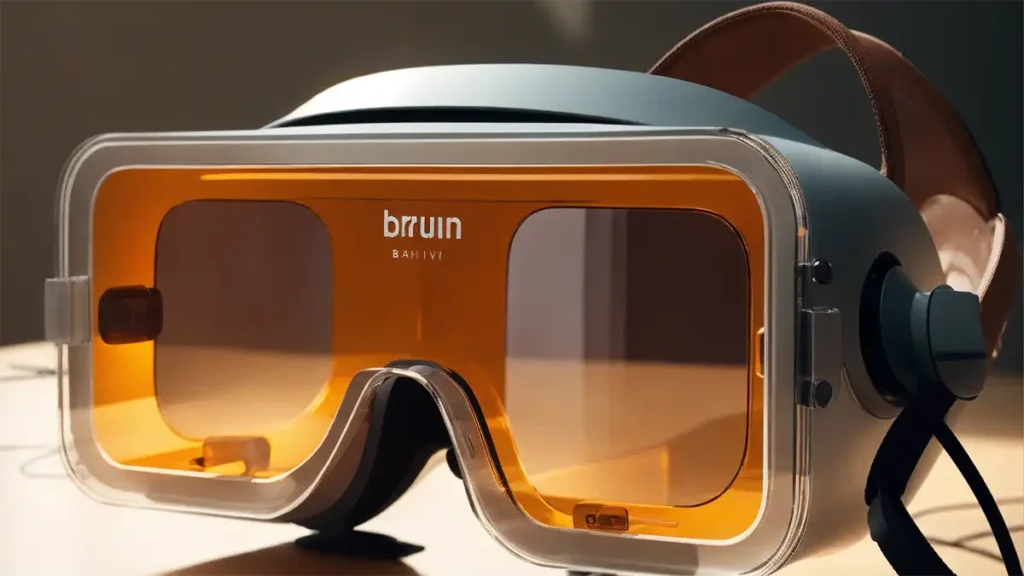
Technology
The technology behind a VR headset makes it possible to experience virtual worlds. It combines several technologies, including head-tracking sensors, gaming controllers, and displays. The head-tracking system uses cameras to determine your position, and the gaming controllers translate that information into motion. While the VR headset may seem like a novelty, it is gaining popularity among gamers and others who want to experience a different way of gaming. The technology is also used in educational settings to help students learn and have fun with various subjects.
The latest high-end VR headsets have impressive features. They can be worn with glasses, allowing users to move in three dimensions. This means they can tilt, crouch, and shift their positions in the game. Most headsets also have a built-in camera that can track the headset’s position and hand-held controllers. This allows them to be placed in a room and lets players interact with objects and environments from anywhere in the room.
A good VR headset must have a large field of view (FOV). This is necessary for a realistic VR experience, as it is essential to see the entire environment. In addition, a wide FOV helps to reduce the effects of motion sickness, which can occur when people turn their heads too fast. Some headsets have a fixed field of view, while others have an adjustable one.
Several types of VR headsets are on the market, from inexpensive Cardboard sets to more expensive all-in-one models. Google has a set of best practices that headset makers must follow to get its “Works with Google Cardboard” stamp of approval. However, these headsets still have limited interactivity and are not designed to be worn for long periods.
The Oculus Rift and HTC Vive are the most popular high-end headsets but also the most expensive. Both require a room-sized space that can be cleared of furniture and high-powered computers to run them. The latest versions of these headsets have improved tracking and display resolution, but their prices still need to be lowered for most buyers. However, the next generation of VR headsets is expected to offer much more affordable pricing, and it’s also likely that they will support wireless controllers.

Design
The best VR headset design provides a comfortable fit and delivers a high-quality display. Higher resolutions remove the screen door effect, and faster refresh rates help make VR games feel more natural. Some headsets also use OLED displays, which offer better contrast and colour. A large field of view is another important feature, as it helps you see more of your surroundings. The latest headsets are incredibly light; some even have foldable designs, making them more portable. The best standalone VR headsets have a lightweight and compact design, while those needing to connect to a computer or gaming console tend to be bulky.
The most prominent players in VR have been working hard to develop the most advanced devices. The latest generation of headsets is a bit more expensive, but the quality of their hardware and software makes them worth the investment. They are compatible with various apps and can work as a standalone device or connect to a smartphone, computer or game console.
Some popular headsets include PlayStation VR, HTC Vive and Oculus Rift. The latter has a premium look and performance but requires a powerful PC to work correctly. HTC Vive, on the other hand, is a more affordable option that works with a wide variety of apps and is comfortable to wear for long periods.
Other headsets, like the Meta Quest 2 and the new Oculus Cosmos Elite, have been designed to be future-proof with their eye-tracking capabilities, crisp display resolutions, and smaller controllers with improved haptics. The latter also boasts HDR colours that can combine real-world and virtual worlds, although these features may be a few years away from reaching the consumer market.
While most new VR headsets are tethered to a computer, the experience differs from traditional video games. Many people find VR can cause nausea, especially if users move around in a virtual environment. This is because the human brain does not perceive movement in a virtual environment in the same way as it does in the real world. Adding a fixed reference point, such as a horizon line or dashboard, can help reduce this problem.
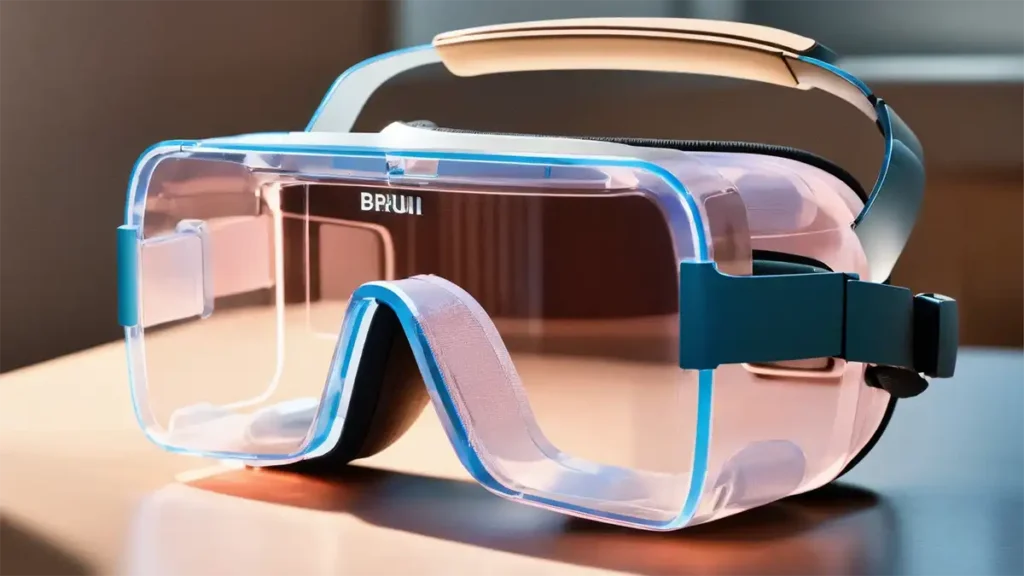
Apps
Virtual reality apps are the software that runs inside a VR headset to create a virtual world and give you an immersive experience. These apps can be used for various purposes, such as teleconferencing, watching movies, playing games, etc. They are available in the market in different shapes, sizes and prices. Some are cheap, while others are expensive and feature advanced graphics. Some are geared towards specific fields of use, such as training surgeons or exploring a haunted city.
Standalone VR headsets are usually made of plastic and have a viewing slot for your smartphone. They aren’t designed to be worn for long periods, and they are uncomfortable. Cardboard viewers are cheap, and you can even find a foldable one in the New York Times or the Sports Illustrated swimsuit issue. There are a few more comfortable options, but they’re still relatively expensive.
A tethered headset, like the Oculus Rift or HTC Vive, connects to your computer or console and uses motion controllers to interact with virtual content. It is usually more expensive than a standalone headset, but it can offer better graphics and a more immersive gaming experience. The high-end headsets are designed to make you feel as if you’re actually in the game, and they have positional tracking to allow you to move around and look at things from different angles.
Most tethered headsets come with a selection of games and experiences. For example, at launch, Oculus Rift customers get a free copy of platformer Lucky’s Tale and EVE: Valkyrie. HTC’s Vive comes with Tilt Brush, Fantastic Contraption, and Job Simulator. The headsets can also play most Xbox games and support Microsoft’s motion controllers.
Many other types of VR apps allow you to watch a movie on a giant screen, learn about atomic bonds with molecules scaled up to fill your room, or hang out with friends from anywhere in the world. Some apps let you explore the human body from a microscopic level to understand how it works. Others, such as Engage VR, are designed to bring you into a virtual classroom and connect with other students in the same class.

Affiliate Programs For Virtual Reality (VR)

Explore the Virtual Reality Scene in Chicago – Where to Go and What to Do

Pokequest VR

Experience the Thrill of Virtual Reality Movies in Your Home 2025

Explore the Virtual Reality Social Scene with These Top Platforms

Experience the Future of Gaming with PS4 Virtual Reality
Trending
-

 VR Movies4 months ago
VR Movies4 months agoExperience the Thrill of Virtual Reality Movies in Your Home 2025
-

 Virtual Reality5 months ago
Virtual Reality5 months agoExplore the Virtual Reality Social Scene with These Top Platforms
-
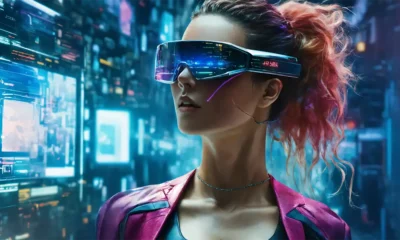
 PS4 VR2 years ago
PS4 VR2 years agoExperience the Future of Gaming with PS4 Virtual Reality
-

 VR Games2 years ago
VR Games2 years agoInto the Radius on Meta Quest 2
-

 Nintendo Switch2 years ago
Nintendo Switch2 years agoUnlock the Power of Virtual Reality with Nintendo Switch!
-
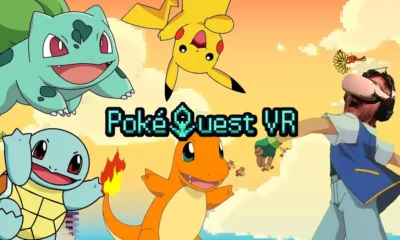
 VR Games1 month ago
VR Games1 month agoPokequest VR
-

 VR Games2 years ago
VR Games2 years agoMonkey Place VR
-
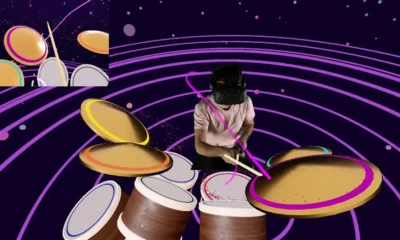
 VR Games2 years ago
VR Games2 years agoParadiddle VR – A Virtual Reality Drumming Game

